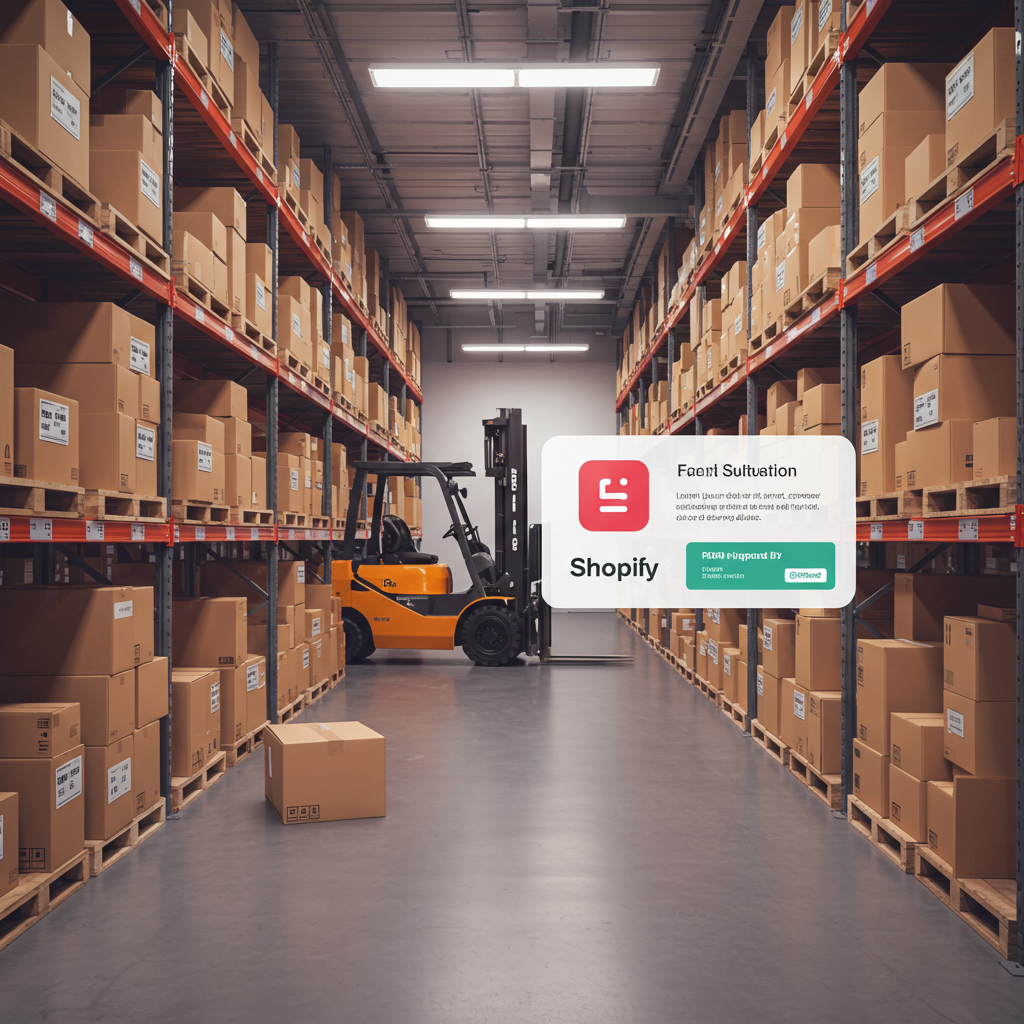From Overwhelmed to Optimized: How I Found the Right Logistics Partner to Scale My E-commerce Business
As a Shopify merchant, I know firsthand the exhilarating rush of a successful product launch, the satisfaction of a growing customer base, and the sheer terror of a sudden surge in orders.
Initially, I handled all my fulfillment myself. My spare room became a mini-warehouse, my evenings were spent packing boxes, and my weekends were dedicated to post office runs.
It was manageable at first, but as my business grew, I quickly realized this wasn’t sustainable. The time spent on logistics was time I wasn’t spending on marketing, product development, or customer engagement.
I hit a wall. My growth was bottlenecked by my ability to pick, pack, and ship. That’s when I started seriously looking into Third-Party Logistics, or 3PLs.
A 3PL is essentially an outsourced logistics partner that handles warehousing, inventory management, order fulfillment, and shipping on your behalf. For a Shopify store, it can be a game-changer.
The primary benefit I discovered was scalability. During peak seasons or flash sales, a 3PL can effortlessly handle increased order volumes without me needing to hire temporary staff or rent more space.
Cost savings were another huge plus. 3PLs operate on economies of scale, meaning they get better shipping rates and can optimize processes in ways a small business simply can’t.
They also bring expertise. I no longer had to worry about the intricacies of international shipping, customs declarations, or optimizing shipping zones. They handle it all.
This freed up my time immensely. I could finally focus on what I do best: building my brand, sourcing new products, and connecting with my customers.
Improved customer satisfaction was a direct result. Faster shipping times, accurate order fulfillment, and professional packaging all contribute to a better post-purchase experience.
So, how did I choose the right 3PL for my Shopify store? It wasn’t a decision I took lightly. Here are the key considerations I focused on.
First and foremost, seamless integration with Shopify was non-negotiable. I needed a 3PL that could connect directly to my store, automatically pull orders, and update tracking information.
Their warehouse locations and network were crucial. Having fulfillment centers strategically placed closer to my customers meant faster delivery times and often reduced shipping costs.
I meticulously reviewed their pricing structure. Beyond the basic pick and pack fees, I looked for transparency in storage fees, receiving fees, and any potential hidden charges.
The technology and software they offered were also vital. I wanted a robust Warehouse Management System (WMS) that provided real-time inventory visibility and detailed reporting.
Customer service and communication were paramount. I needed a partner who was responsive, proactive, and assigned a dedicated account manager I could easily reach.
I also considered if they specialized in my product type. Some 3PLs are better suited for fragile items, apparel, or oversized goods, and finding a match can prevent headaches.
Their ability to scale with my business was a major factor. I needed a partner who could handle my current volume but also accommodate significant growth in the future.
Efficient return management was another point of inquiry. How do they handle returns? Is the process smooth for both me and my customers?
Finally, I checked their reputation and reviews. What were other Shopify merchants saying about their experiences? This gave me invaluable insights.
Based on my research and experience, here are a few of the top 3PL services that consistently stand out for Shopify merchants.
ShipBob is a fantastic option, especially for growing brands. Their technology is top-notch, offering a robust platform for order management, inventory tracking, and analytics. They have a wide network of fulfillment centers, which is great for distributed inventory.
Deliverr, now part of the Shopify Fulfillment Network, focuses heavily on fast shipping. If 2-day or even next-day delivery is critical for your business, they are worth exploring due to their predictive inventory placement and transparent pricing.
Red Stag Fulfillment specializes in handling heavy, bulky, or high-value items. They boast an impressive accuracy guarantee and are known for their meticulous handling, which can be a lifesaver for certain product categories.
ShipMonk is another strong contender, catering to both startups and established brands. They offer excellent technology, custom packaging options, and a good balance of services, making them quite versatile.
Whitebox offers a more comprehensive e-commerce solution, going beyond just 3PL services to include marketing and analytics. If you’re looking for a true end-to-end partner, they might be a fit.
My process for vetting potential 3PLs involved defining my exact needs, requesting detailed quotes from several providers, and then conducting thorough interviews.
I made sure to ask about their Service Level Agreements (SLAs) and what guarantees they offered regarding shipping times and order accuracy.
A common pitfall I learned to avoid was choosing a 3PL solely based on the lowest price. Hidden fees or poor service can quickly negate any initial savings.
Another mistake is underestimating the importance of integration. A clunky integration can create more work than it saves.
Making the transition to a 3PL requires careful planning. I conducted a thorough inventory audit, ensured all my product data was accurate, and communicated clearly with my customers about the change.
Ultimately, partnering with a 3PL was one of the best decisions I made for my Shopify store. It allowed me to reclaim my time, reduce stress, and most importantly, scale my business beyond what I could have achieved alone.
If you’re a Shopify merchant feeling overwhelmed by fulfillment, I highly recommend exploring these options. It’s an investment that truly pays off.
What are your thoughts on this article? Have you used a 3PL for your Shopify store, and what was your experience like?






